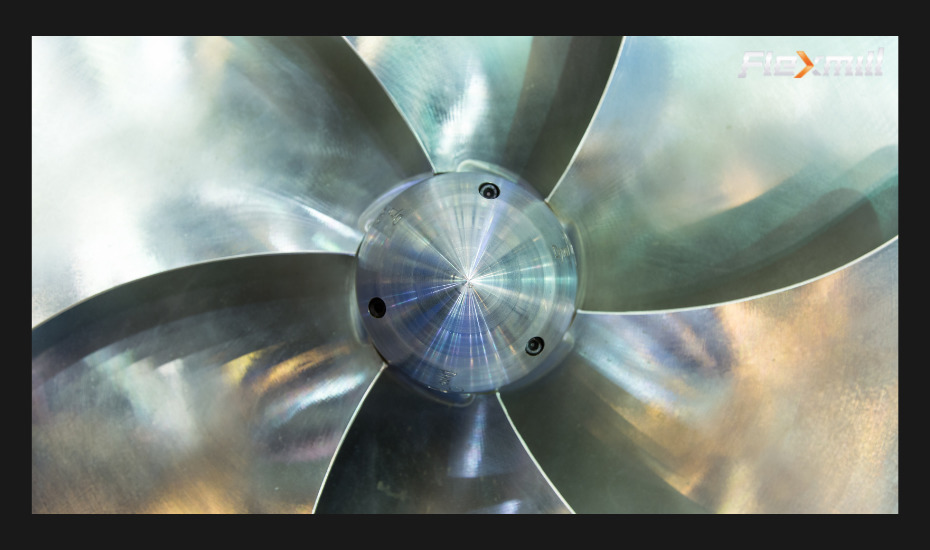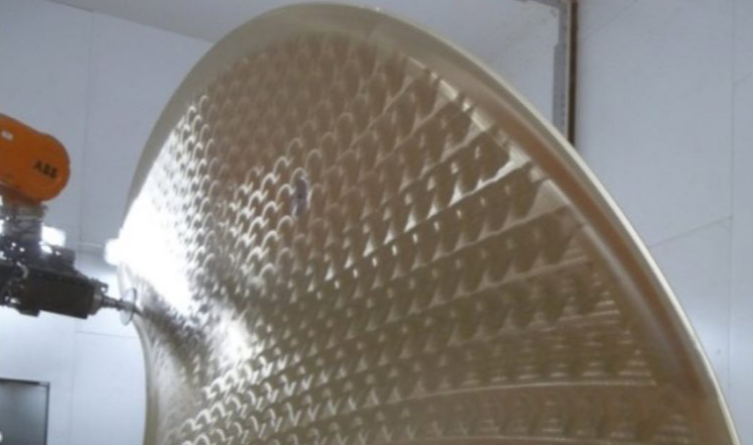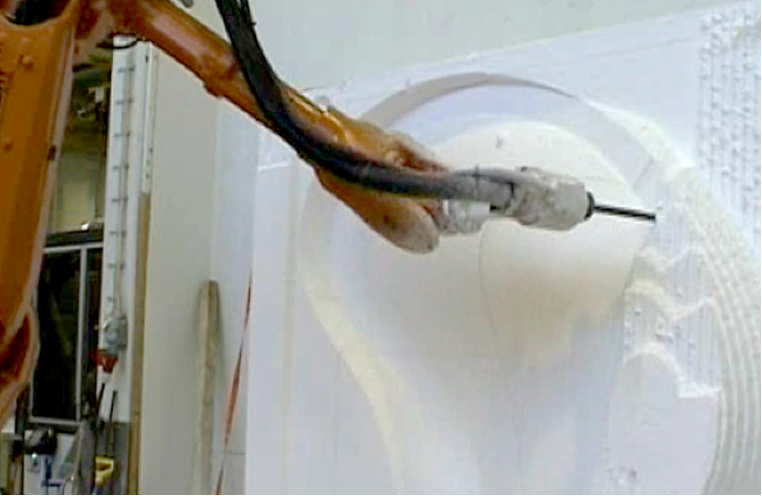
Marine propeller manufacturers typically use either manual grinding or NC milling for surface finishing. Unfortunately, manual work is slow, dangerous, and offers low-quality. NC machines, on the other hand, are too expensive for surface finishing. Luckily, there is a smarter way – robotic grinding! Read this article to learn how it helps propeller manufacturers increase productivity, quality, and safety while reducing operational costs!
Propellers are manufactured using either investment casting or NC milling. Grinding, which is needed for finishing a smooth propeller surface, is carried out manually after milling or by simply extending the NC milling process until the required level of surface smoothness is achieved.
Propellers are complex objects. Their non-linear lofted blades and exact concentric dimensions make them challenging workpieces for manual grinding. Heavy propeller blades are difficult to handle. Each workpiece, weighing hundreds or thousands of kilos, is typically moved several times during processing. Manual grinding using heavy, intensely vibrating tools in inconvenient working positions is slow, hard, and dangerous. Polishing a single blade using a hand-held angle grinder with a large disc takes several hours. Grinding specialists cannot carry out processing a workpiece for a long time without keeping a break. The quality suffers and it is hard to keep committed deadlines. The vast amount of metal dust generated in the process fills the workshop air volume, resulting in inhuman and health depriving working conditions.
NC milling is the other commonly used method for finishing and polishing propeller surfaces – especially when milling is used for crafting and shaping blade contours and edges. The NC milling process is simply extended with more and more runs using grinding tools until the surface roughness meets the requirements.
Unfortunately, using an NC machine for surface grinding is too expensive. NC milling is slow, so the cost per hour of running an NC machine for final surface finishing and polishing becomes high, and it doesn’t make much economic sense.
Robotic precision grinding is a faster and more cost-efficient alternative to an NC machine. A grinding robot works quickly, and at a constant speed. It can be flexibly pre-programmed for different workpieces. The most advanced griding robots can automatically change the disc to maximize unmanned operation time. The robot increases the quality and produces an identical and uniform surface from one propeller to another. A precision grinding robot releases the expensive NC machines to do what they are designed to do – hard-core machining and milling.

Manufacturers can use high-precision surface grinding robots to finish, polish, and clean metal surfaces of several types of components in the marine and aircraft industries. Typical applications include airfoil polishing, turbine blade finishing, and propeller finishing. Robotic grinding enables you to improve the propeller manufacturing process in many ways – increasing productivity, quality, and safety while reducing operational costs.
The surface grinding robot platform consists of a few primary components – these include a cabinet, robot arm, payload force controller unit, high-precision rotary servo table, compliance unit, and tool. You can equip the robot to operate different grinding tools such as discs, belts, and stones for finishing and polishing the propeller surfaces. A grinding robot supports milling through adaptive material removal for shaping edge contours and surface areas.
An electrical spindle motor with an active force compliance unit mounted on the robot arm ensures that the robot moves the tool accurately according to the workpiece surface and applies a uniform pressure throughout the run. This maximizes the quality and consistency across all blades and propellers.
Flexmill’s patented, fully automated disc change system increases the autonomous, unmanned propeller grinding time up to 24 hours.
An advanced grinding robot is managed and monitored via a control user interface. A tool time manager collects the tool usage data and communicates with the cell control software. Upon an expired tool lifetime, the robot cell is promptly requested to switch to a new tool.
The grinding robot is just one component of an end-to-end automated propeller grinding process. By automating the material flow around the grinding robot cell, you can increase the efficiency even more. Instead of people moving and fixing blades weighing hundreds of kilos, automated lifting and conveyor systems move even the heaviest parts with ease.
A sophisticated, customizable clamping system allows fastening propeller parts of any type and shape at every possible position on standard cradles. These cradles automatically move along a conveyor track, feeding new workpieces into a buffer to wait for their turn to be processed. After grinding of a workpiece has been completed, the conveyor system moves it out of the grinding cell into the buffer of finished parts. The next workpiece is moved in the cell to be processed. So, an end-to-end automated material flow (watch video) can speed up your surface finishing process significantly.
The robotic propeller finishing process goes as follows:
The precision grinding robot can be used for machining all types of pattern materials such as expanded polystyrene, high-density structural foams, tooling paste, wood, and more. This means that you can share the grinding robot investment machining for propeller molds, too.

You now have three alternatives for propeller surface finishing as a propeller manufacturer: manual grinding, precision grinding robot, and NC machine. Which one should you choose? What are the pros and cons? Here is our quick comparison table allowing you to vet the pros and cons of each alternative on ten essential decision criteria.
| Manual Grinding | Grinding Robot | NC Machine | |
| Speed | Very slow | Very fast | Medium |
| Workflow | Unpredictable | Predictable process | Predictable process |
| Capacity | Low | Scalable from low to high | Economic at high capacity |
| Quality | Low and inconsistent | High and consistent | High and consistent |
| Human impact | Serious health issues | Worker friendly | Worker friendly |
| Flexibility | High flexibility | High – multi-purposes | Low – single purpose |
| Risk | Human-factor risk | Low risk (multi-purpose) | High risk (single purpose) |
| Investment ($) | Hiring costs | Medium to high | Very high |
| Operational cost ($) | Employment costs | Medium | High |
| Ramp up time | Talent acquisition time | 4-6 months | 6-12 months |
The grinding robot is the new, smart way for propeller surface finishing. It is fast, efficient, and flexible. With the robot, your propellers will be renowned for their high quality and uniform finishing. You can accurately predict the capacity and keep committed customer deadlines. Your staff will appreciate the increased safety and clean air at the workshop. You can quickly configure the grinding robot for several purposes, release the expensive NC machines for milling, and maximize the process flow end-to-end!
Contact Flexmill for the most advanced grinding robots with a patented, fully automatic tool-change!
Are you considering a surface finishing robot investment? Download our ROI calculator for a best-practice example.